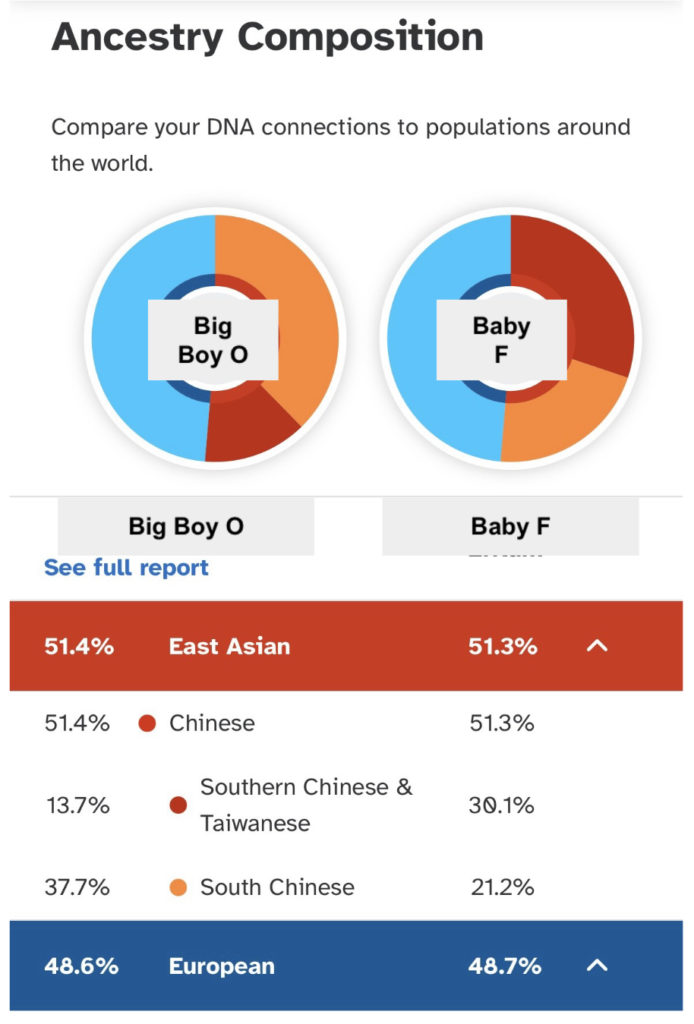As babies, Big Boy O and Baby F looked very similar. In fact, I occasionally mix up their infant photos. But Baby F is slightly fairer, has slightly rounder eyes, wavier hair, and a more rounded face, and is slightly taller for his age, compared to Big Boy O, who tans more easily, has almond eyes, straight hair, an oval face, and is slightly shorter for his age.
In other words, Baby-F looks marginally more European than Big-Boy-O, although they both look mixed, and look more European in winter, and more Asian in summer or when they are tanned. AJ and I had always assumed that this was because Baby-F expressed more ‘European’ genes from a physical trait perspective.
But in fact, we have since discovered that the slight variance in their look comes from their Asian side. According to DNA test results, Big-Boy-O is more ‘South Chinese’ (Cantonese / Hainanese) than ‘Southern Chinese & Taiwanese (large swatches of Southern China including Yunnan, Sichuan, Fujian, Zhejiang, Jiangsu), whereas it is the opposite for Baby-F. Big-Boy-O is 38% South Chinese (Hainanese) and 14% Southern Chinese, whereas Baby-F is 21% South Chinese (Hainanese), and 30% Southern Chinese.

They share ~56% of DNA, which is higher than average for full siblings (~50%), and on the high side of the ~40-60% range (source).
Big-Boy-O has more Neanderthal variants than ~93% of 23&me customers (still <2% of DNA), Baby-F has more variants than ~87% of 23&me customers, which are both closer to me (my equivalent is ~94%) compared to AJ (~48%).
Ultimately, does it make a difference? Not really – I don’t really think so. But it clears up our previous misconception and sheds new light on the ancestry mix, and how genes are inherited and expressed.
